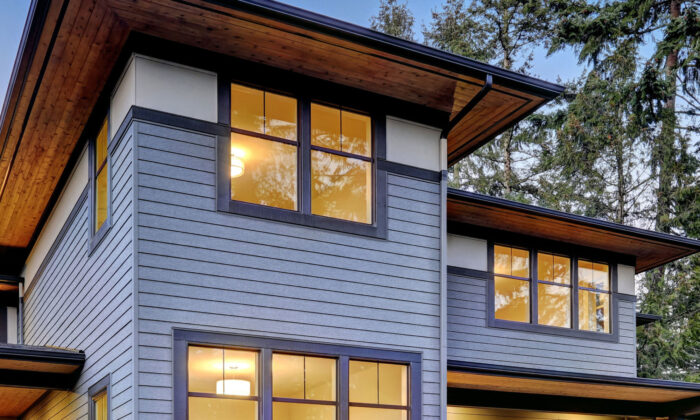SUITING UP FOR SUMMER: THE BENEFITS OF HEAT-RESISTANT VINYL SIDING
Discover how heat-resistant vinyl siding protects your home from sun damage, reduces energy costs, and keeps your exterior looking its best.
READ MORE
What’s at the top of your list when it comes to building or renovating your home? New windows? Doors? Roofing?
One of the most important considerations—that can create the biggest impact—is siding. And choosing the right siding for you and your location is a bigger task than most people realize.
Your siding is the face of your home. It’s constantly visible from the outside; it helps insulate and protect the interior; and it’s often the first thing people notice. That means you’ll want to invest in siding that looks good and works effectively all year round, wherever you are.
The reason that can be tricky to accomplish is simple: Everyone’s home is different. Your priorities and needs could be totally different from your neighbor, let alone someone on the other side of the country.
Let’s look at some of the options for siding, so you can work out which material is best for your home.
For most of us, money is a factor when it comes to updating and maintaining our home. With siding, there are several different cost options, and the one you choose will largely depend on whether you want to pay a big upfront sum or pay more over time.
Let’s check out the main options:
On top of this, you’ll also want to think about replacement.
This is one area where wood doesn’t fare particularly well: Some sections may need to be replaced more than once a year, especially if it isn’t maintained properly. On the other hand, steel, fiber cement and vinyl can last decades without being replaced, and steel has the longest-lived with a lifespan of up to fifty years.

Your home is an extension of yourself, and it’s natural to want it to reflect your personal tastes and style.
When it comes to customization potential, wood and vinyl are the best options. They both support more than a hundred color choices, and vinyl also comes in a range of different textures.
Steel and fiber cement are less versatile but still come in more than forty colors, offering a lot of potential for customization and putting your own stamp on your home.
The siding you choose will depend heavily on where you live. A home in the drizzly Pacific Northwest will have very different needs to a home in the heart of Arizona.
Let’s take a look at the differences.
Fiber cement is a better option. It’s tough and affordable, but if it isn’t properly maintained, it can still run into problems. However, the best option here, especially if your home regularly takes a beating from the wind, is steel siding, as steel performs well in very cold climates.
Wood is best suited to steady climates, as it doesn’t handle changes in temperature well. It’s also flammable and susceptible to insect infestation and rot.
There are lots of reasons to make your home more eco-friendly, from saving on cost to qualifying for subsidies, not to mention doing your part for the environment. The type of siding you choose will play a big role in how eco-friendly your home is.
The best option for sustainability is steel siding. It’s tough, requires little maintenance, and is easily recycled, making it highly sustainable. Steel is also the most recycled material in North America; more steel is recycled per year than aluminum, paper, glass and plastic combined.
Fiber cement is made from natural materials and requires little maintenance, lasting a long time. A downside to this material is that the manufacturing process uses a lot of energy. In addition, fiber cement siding hasn’t been in use long enough for the industry to know for sure if it’s biodegradable in landfills.
Wood, while it may seem like the most natural option, isn’t very durable and will need regular replacement (which means more trees to cut down). Try to invest in reclaimed wood for a greener solution and be careful what you use to paint or stain the wood, as that can be a factor in its recyclability.
While vinyl isn’t thought to be as eco-friendly as steel or fiber cement, it is green certified; plus, it is easy to transport and maintain and can be combined with insulation to keep the home more energy efficient.
When deciding on siding, there’s a lot to keep in mind. Your situation is unique, and the material you choose will depend entirely on your circumstances. Take some time to figure out what factors are most important to you, and you’ll make an informed decision that will complement your home for years to come.
For even more help choosing the best siding for your home, download a free copy of our siding comparison infographic. To learn more about how Rollex can help bring a touch of personality to your home that stands firm against the elements, contact us today.